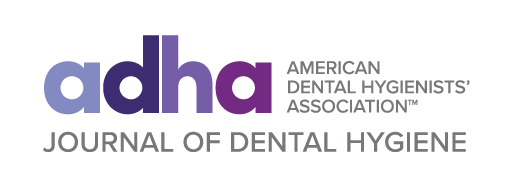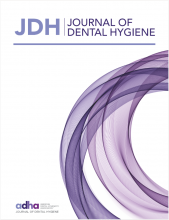Abstract
Purpose Dental hygienists’ knowledge and application of clear communication techniques are critical due to their role as primary providers of education about preventive regimens. The purpose of this study was to obtain information about dental hygiene students’ perceived education regarding recommended communication techniques and their intent to use these techniques in practice.
Methods A national online survey was designed by the University of Maryland and structured by the American Dental Association’s Council on Advocacy for Access and Prevention (CAAP). The survey was distributed by the American Dental Hygienists’ Association (ADHA) in 2019 to 9533 student email addresses. The survey included student demographics, the recommended communication techniques they were exposed to, when and where they were assessed, whether they had heard of the term health literacy, and their intent to use the communication techniques once in clinical practice. Statistical analyses included descriptive statistics and analysis of variance. Significance was set at p< 0.05.
Results A total of 235 surveys were returned for a 2.5% response rate. The majority were female (95.7%), white (81.7%) and born in the United States (89.8%). Nearly a third (28.1%) were in baccalaureate programs and over half (59.1%) were in associate degree programs. The most frequently reported method used to educate students about provider-patient communication techniques was lectures (88.9%). Respondents were more likely to report having knowledge regarding the use of simple language (98.3%) than asking the patient to repeat back the information or instructions (87.7%). Respondents had greater confidence (82.1%) and intention to use simple language (92.8%) than confidence to ask patients to repeat back information (73.2%) or intention to do so in the future (67.7%) The majority (58.3%) reported being evaluated on communication skills both in the classroom and clinic setting.
Conclusions Results of this survey, although non-representative of all dental hygiene students, suggest a need for increased classroom and clinic use of recommended communication techniques in dental hygiene education programs. Dental hygiene graduates must understand the use of recommended communication techniques to reduce misinformation about oral health and increase patients’ knowledge and understanding about preventing oral diseases.
- Received October 18, 2024.
- Accepted February 10, 2024.
- Copyright © 2025 The American Dental Hygienists’ Association
Log in using your username and password
This article requires a subscription to view the full text. If you have a subscription you may use the login form below to view the article. Access to this article can also be purchased.








